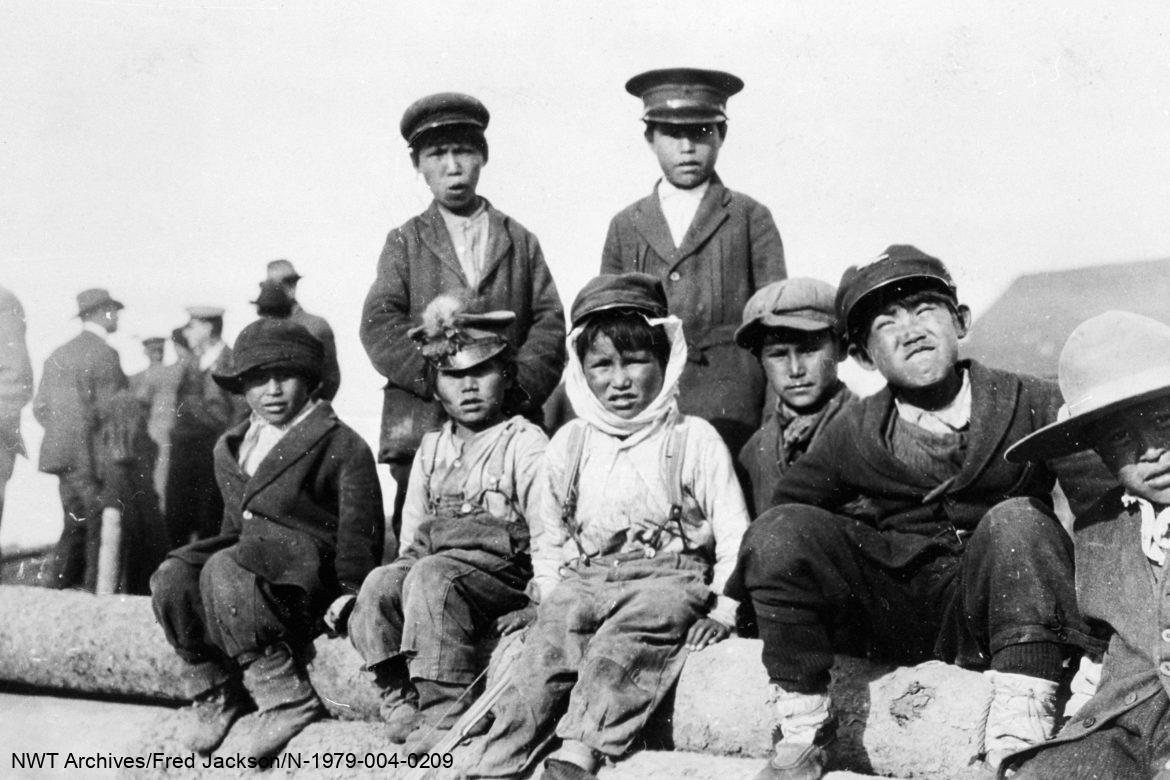1900-1924
Canada looks North
The first decades of the 20th century saw the Dominion of Canada take an interest in the NWT. The federal government intended to integrate the Dene, Cree, Inuit and Métis people into the more extensive Canadian system. Southern economic and political structures were imposed, Treaties 8 and 11 were signed, and the land was surveyed following Canadian colonial practices. New forms of transportation helped carry the colonial political and economic influence flowing into rivers and lakes and up the Dehcho (Mackenzie River) to Herschel Island and the Inuit Nunangat. (traditional homeland of the Inuit)
Many families continued to follow traditional lifestyles until the game became scarce. Southern trappers, now easily able to utilize transportation links, took the northern fur resources beyond subsistence to exploitation, leaving the Indigenous people with little to hunt and nothing to trade. Treaty promises were ignored, and many people starved or moved into the communities seeking wage jobs. Traditional clothing gave way to purchased cloth material. Children became legally required to attend school. The RCMP, now a presence in most trading post communities, started to enforce attendance rules, wildlife restrictions, and Canadian-identified criminal behaviours. The first trial on NWT soil resulted in hanging for a domestic violence murder conviction. Canada saw opportunities to continue the country’s tradition of resource development at the expense of the traditional Indigenous cultural practices that had sustained generations.
